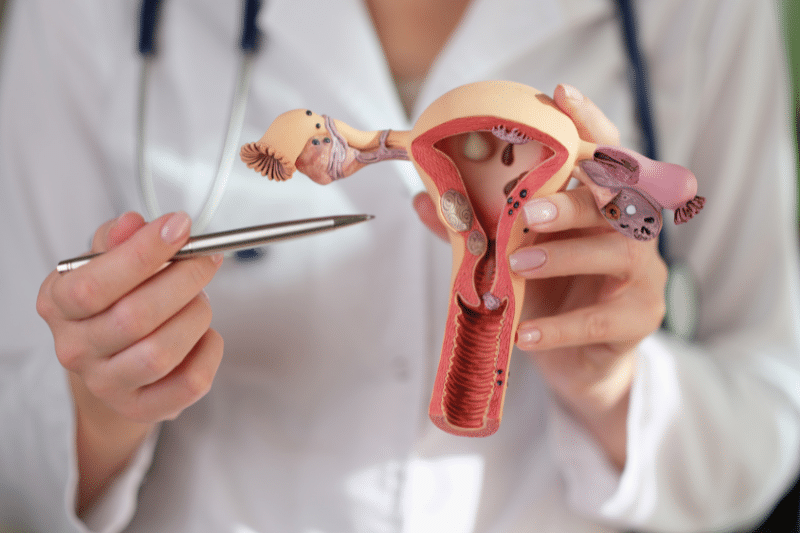In recent years, Assisted Reproductive Technology (ART) has become a go-to for couples with fertility and pregnancy issues, addressing infertility at a population level through art reproductive methods. Therefore, understanding the options is key, as the journey to parenthood can be complicated. This guide will give you an in-depth look at ART, its types, processes, fertility treatments, risks, costs, and the latest developments so you can make informed decisions.
What is Assisted Reproductive Technology (ART)?
Assisted Reproductive Technology is a medical procedure to treat infertility. ART, an artificial reproductive technology, involves various assisted reproductive techniques such as in vitro fertilization (IVF) and pre-implantation genetic diagnosis (PGD). Where eggs and sperm handled outside the body to achieve pregnancy. This technology has given hope to many couples who can’t conceive naturally.
According to the Centers for Disease Control and Prevention (CDC), in 2021, 2% of all infants born in the US were conceived using ART.
What Does ART Stand for in Reproductive Health or Reproductive Medicine?
ART stands for Assisted Reproductive Technology. This includes various medical procedures that help you get pregnant including IVF, ICSI, and embryo freezing. A woman takes medicine as part of ART procedures used to treat infertility, which typically involves the surgical removal of eggs from her ovaries and combining them with sperm in a lab. ART is the backbone of modern assisted reproductive technologies in medicine and solves many infertility problems.
How Has ART Evolved?
ART has come a long way since the first IVF in 1978 which resulted in the birth of Louise Brown, the world’s first “test-tube baby”. Initially, ART has limitations but with the advancement of technology and understanding of reproductive health, more treatments are available. These advancements in assisted reproductive technologies have increased success rates and more couples can experience parenthood.
What Are the 4 Most Common ARTs?
-
In Vitro Fertilization (IVF) – The most common ART, where an egg fertilized outside the body and then implanted in the uterus.
-
Intracytoplasmic Sperm Injection (ICSI) – A procedure where a single sperm injected into an egg, often used when male infertility is a factor.
-
Embryo Freezing (Cryopreservation) – Freezing and storing of embryos for future use.
-
Egg Donation – Where eggs from a donor fertilized and implanted in the recipient’s uterus.
When Was ART Introduced?
ART introduced in the late 70s, Louise Brown was born in 1978 and that marked the beginning of a new chapter in reproductive medicine. Since then ART has come a long way with continuous improvements in success rates and availability.

Assisted Reproductive Technology – History and Evolution
What is the History of Vitro Fertilization (IVF)?
IVF has a long history, the first “test-tube baby” was born in 1978. Years of research and experimentation by pioneers like Dr. Robert Edwards and Dr. Patrick Steptoe led to IVF. Since then IVF has become an advanced and widely used technique, helping millions of couples to achieve their dream of parenthood.
The CDC assisted reproductive technology program plays a crucial role in the comprehensive surveillance and reporting of assisted reproductive technology practices and outcomes in the United States. This includes data collection and analysis by the Centers for Disease Control and Prevention (CDC) to monitor trends, effectiveness, and safety of various assisted reproductive methods over the years.
Who is the Father of ART?
Recognized for his groundbreaking work in IVF, Dr. Robert Edwards known as the “father of ART.” He was awarded the Nobel Prize in Physiology or Medicine in 2010.
Why IVF is So Common Now?
IVF is common because of its high success rates and it can address many infertility issues. As technology improved IVF became more accessible and affordable, clinics all over the world are offering the procedure. Social acceptance of IVF also increased, making it a mainstream option for couples with infertility.
When Did ART Become Mainstream?
ART became mainstream in the 80s and 90s after the first IVF births. As techniques improved and success rates increased ART became a recognized and accepted treatment for most infertility treatments. Now ART is a common solution for couples with fertility issues, and millions of babies are born worldwide through these reproductive technologies.
Assisted Reproductive Technology – Types and Techniques
Is ART the Same as IVF?
IVF is a form of ART but not all ART is IVF. ART is the umbrella term that includes various techniques to treat infertility of which the IVF treatment is the most common and well known. Other ART techniques are ICSI, egg donation, and surrogacy.
What is the Difference Between ART and IVF?
ART means all medical interventions that help with conception including IVF, ICSI, and surrogacy. ART techniques often stimulate egg production to increase the chances of successful fertilization. IVF means fertilizing an egg outside the woman’s body and implanting it in the uterus. ICSI is a form of ART used in conjunction with IVF to address infertility in a male partner with infertility by injecting a single sperm into the egg.
What is the Most Effective ART?
ART effectiveness varies depending on the technique and individual situation. IVF with ICSI considered one of the most effective ARTs for couples with male infertility. ART success rates vary.
According to the CDC, the average success rate for IVF in the US in 2021 was around 45% per cycle for women under 35.
What is the Difference Between ICSI and IVF?
ICSI (Intracytoplasmic Sperm Injection) is a specialized form of IVF. While IVF involves mixing eggs and sperm in a lab dish to allow fertilization to occur only for healthy eggs and sperm to do naturally, ICSI involves directly injecting a single sperm into an egg. ICSI is particularly useful when male factor infertility is an issue, such as low sperm count or poor sperm motility.
What is the Role of Surrogacy in Assisted Reproductive Technology?
Surrogacy is an ART option where another woman, the surrogate, carries and delivers a baby for the intended parents. Surrogacy is often used when a woman cannot carry a pregnancy due to medical reasons. The embryo implanted in the surrogate. It can create using either donor sperm intended for parents’ gametes or donated ones.
How Does Embryo Freezing Fit into ART?
Embryo freezing, or cryopreservation, is a crucial component of ART. This process allows couples to store embryos for future use. Particularly beneficial if multiple embryos created during an IVF cycle. Later, the doctor implants these frozen embryos. Offering additional opportunities for pregnancy without needing another round of egg retrieval.

Assisted Reproductive Technology – Procedure and Process
What is an ART Cycle?
An ART cycle is the series of steps involved in ART procedures from the initial hormone stimulation to egg retrieval, fertilization, and embryo transfer. Each cycle is individually tailored to the patient and adjustments made based on the body’s response to fertility treatment.
How Long Does IVF Take?
IVF cycle takes about 4-6 weeks from the start of ovarian stimulation to the frozen embryo transfer part. The initial phase is several weeks of hormone injections, then egg retrieval, fertilization, and embryo transfer. If a fresh embryo transfer is done, the whole process can be done within this timeframe. But if embryos are frozen for later using frozen embryo transfer, the timeline may be different. Fresh embryos are often compared to frozen embryo transfers (FET), with FET becoming increasingly common and regarded as safe as using fresh embryos.
What Are the Steps Involved in an In Vitro Fertilization Cycle?
The ART process for IVF involves the following:
-
Ovarian Stimulation – Firstly, hormones given to stimulate the ovaries to produce multiple eggs by promoting the development of ovarian follicles.
-
Monitoring – Secondly, doctors perform blood tests and ultrasounds to monitor the ovaries’ response.
-
Egg Retrieval – Thirdly, eggs retrieved from the ovaries with a needle guided by ultrasound.
-
Fertilization – Then, eggs fertilized with sperm in the lab. If using ICSI, one sperm injected into each egg.
-
Embryo Culture – Later, the fertilized eggs (embryos) cultured for a few days before the best embryo selected.
-
Embryo Transfer – Lastly, the selected embryo transferred to the uterus to achieve a successful pregnancy.
-
Pregnancy Test – A blood test to confirm if it was successful.
What are IUI ART Success Rates?
IUI is another form of ART where sperm placed directly into the uterus. IUI success rate varies based on a woman’s ovaries only sperm amount, age, infertility causes, and use of fertility medications. On average IUI has a 10-20% success rate per cycle, higher in younger women and those using fertility drugs.
How Does ART Vary for Different Fertility Issues?
In assisted reproductive technology (ART), doctors customize treatments to address different fertility issues. For example:
-
ICSI may be used to inject sperm directly into the egg for male infertility.
-
For female infertility, donor eggs may be utilized if the woman’s eggs are not viable.
-
In cases of unexplained infertility, IVF combined with ICSI may be chosen to maximize chances.
The best approach depends on the underlying cause of infertility, with each case carefully evaluated to determine the most effective treatment.

Assisted Reproductive Technology – Safety, Risks, and Ethical Considerations
Is ART Safe During Pregnancy?
Generally, doctors consider ART procedures, including IVF and ICSI safe. However, like all medical procedures, they carry some risks. These include ovarian hyperstimulation syndrome (OHSS), multiple pregnancies, and, in rare cases, complications from egg retrieval.
According to the American Society for Reproductive Medicine (ASRM), the overall risk of major medical complications here is low, and the majority of ART pregnancies result in healthy outcomes.
What Are the Pros and Cons of Assisted Reproductive Technology?
Pros:
-
Increased Chances of Pregnancy – ART provides options for couples who might not conceive naturally.
-
Multiple Techniques – Various ART methods can address different infertility issues.
-
Use of Donors -Egg, sperm, or embryo donation can offer solutions when one partner’s gametes are not viable.
Cons:
-
Cost – ART procedures are expensive, as not always covered by insurance.
-
Emotional Stress – The process also emotionally taxing. Particularly if the couple needs multiple cycles.
-
Health Risks – Associated risks may include ovarian stimulation, egg retrieval, and multiple pregnancies.
What Are the Ethical Issues Around ART?
ART raises many ethical dilemmas:
-
Embryo Disposal – What to do with spare embryos is a tough call.
-
Donor Anonymity – Donor anonymity and the rights of donor children.
-
Surrogacy – Ethical questions around surrogacy arrangements especially commercial surrogacy.
-
Genetic Screening – PGD to select embryos raises the question of “designer babies”.
Couples considering ART should discuss these with their doctor and possibly a counselor to navigate the ethical minefield.
What Are the Long-term Health Risks of ART?
Long-term health risks for children born through ART are an area of ongoing research. Some studies suggest a slightly higher risk of birth defects and low birth weight but most ART babies are healthy. Multiple pregnancies also affect Mother’s health. Talk to a fertility specialist to make an informed decision.
Do Multiple Pregnancies Carry Higher Risks?
ART increases the chances of multiple pregnancies especially when multiple embryos transferred during IVF. Multiple pregnancies carry higher risks for both the mother and babies – preterm birth, low birth weight, and pregnancy complications. Many clinics now recommend single embryo transfer (SET), especially for younger women with good-quality embryos.
What Are the Legal Implications of ART?
Legal issues surrounding ART can be very different depending on where you live and involve parentage, donor and surrogate rights, and frozen embryos. For example, parentage can be disputed in surrogacy arrangements.
Moreover, there can be disputes over stored or donated frozen embryos when a couple separates. If you are considering ART you should talk to a lawyer who specializes in reproductive law to understand your rights and responsibilities.
Assisted Reproductive Technology – Cost and Insurance
Are Assisted Reproductive Technologies Covered by Medical Insurance?
ART coverage varies greatly depending on the insurer, location, and policy. In the US only a few states require insurance coverage for ART and even those states have limited coverage. Check your policy and talk to your provider.
According to Resolve, the National Infertility Association, as of 2024 only 19 states have some form of infertility insurance coverage and the extent of coverage varies.
What is the Cost of Different ART Procedures?
The cost of ART procedures can be high. A single IVF cycle in the US can cost between $12,000 and $15,000 not including medication which can add another $3,000 to $5,000.
Other ART procedures such as ICSI, egg and sperm donation, and surrogacy can be much more. Surrogacy for example can cost between $100,000 and $150,000 depending on many factors.
How Do Couples Manage the Financial Side of ART?
Managing the financials of ART is tough. Here are some ways:
-
Insurance Check – See if your insurance covers any of the treatments.
-
Grants and Scholarships – Some organizations offer financial help or grants for fertility treatments.
-
Payment Plans – Many fertility clinics offer payment plans to spread the cost over time.
-
Crowdfunding – Some couples crowdfund to raise funds for treatment.
What Affects the Cost of ART?
Several things can affect the cost of ART treatments:
-
Location – Costs can vary greatly depending on the clinic.
-
Clinic Reputation – High success rate clinics charge more.
-
Treatment Complexity – More complex cases requiring ICSI or genetic testing will add to the cost.
-
Medications – Fertility medications can add up to the overall cost.
Knowing these can help couples budget for their ART journey and find ways to reduce costs.
How Do Insurance Policies Differ for ART Coverage?
Insurance policies differ greatly for ART. Some may cover only diagnostic tests and not the treatment itself, some may cover part or all of the ART procedures. Some may have limits on the number of cycles or age limits. Make sure to read your policy and talk to your provider to clarify about insurance coverage.

Assisted Reproductive Technology – Trends and Advances
What are the Latest Advancements in ART Technology?
Recent ART advancements have focused on increasing success rates and reducing risks. Here’s what’s new:
-
Preimplantation Genetic Testing (PGT) – Screen embryos for genetic issues before implantation for better pregnancy chances.
-
Time-Lapse – Embryologists can monitor embryo development more closely and select the best embryos to transfer.
-
Artificial Intelligence – AI is analyzing big data to predict ART outcomes.
What’s New Trends in ART?
-
Fertility Preservation – More people are freezing their eggs or sperm for future use, especially those undergoing medical treatments that will impact their fertility.
-
Personalized Medicine – Advances in genetic testing and data analysis are leading to more personalized ART treatment for each individual.
-
Non-Invasive Testing – To enhance success rates, researchers are developing non-invasive methods to test embryo viability and maternal health, reducing the need for invasive procedures.
How Has Technology Helped ART Success Rates?
Technology has been a game changer for ART success rates. Advances in embryo culture, genetic screening, and cryopreservation have all contributed to higher pregnancy rates and better outcomes. Plus, a better understanding of ovarian stimulation and embryo selection has led to more successful ART cycles.
According to Society for Assisted Reproductive Technology (SART), IVF success rates have been increasing over the past 10 years, and live birth rates per cycle are now almost 50% for women under 35 in 2024.
Assisted Reproductive Technology gives hope to millions of couples around the world who are struggling with infertility. Knowing your options from IVF to surrogacy embryo adoption and the risks, costs and legal implications is key to making informed decisions. With technology advancing all the time the future of ART looks bright and more opportunities for couples to have their dream family.
However, it’s important to speak to qualified healthcare professionals to discuss your situation and what’s best for you. ART can be a complex and emotional journey but with the right information and support it can lead to the ultimate reward – a healthy happy family.










